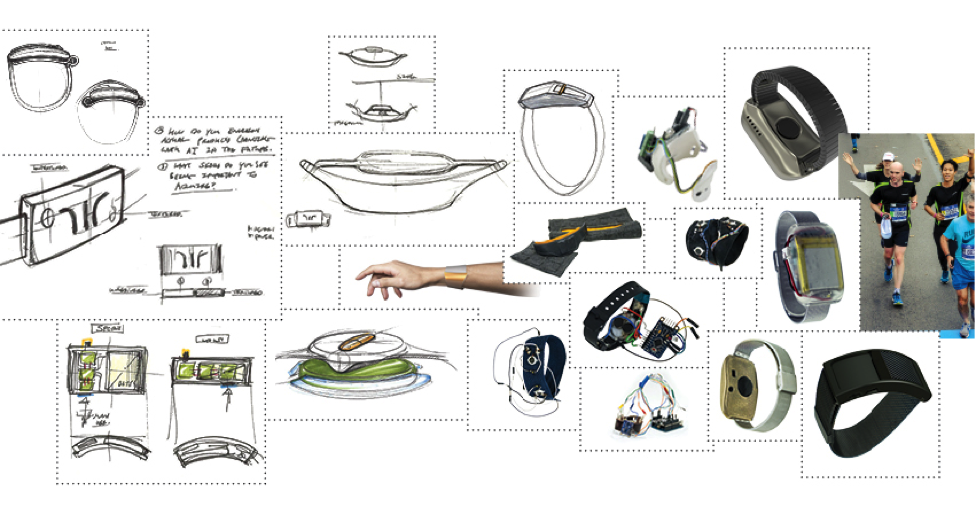
From the pages of Prattfolio, this article is part of a section highlighting the problem-solving process in the real world, from the perspective of alumni in the field. The Spring/Summer 2018 issue features the work of Keith Kirkland, MID ’15; Yangyang Wang, MID ’15; and Kevin Yoo, BID ’15, of WearWorks, a haptic design company.
A fascination with haptics, or touch-based communication technology, brought the cofounders of WearWorks together, as did a shared drive to improve lives. Keith Kirkland, who was developing a haptic bodysuit to teach its wearer kung-fu, met Yangyang Wang and Kevin Yoo, who were developing haptic motors, in the Digital Arts and Humanities Research Center at Pratt. After collaborating on a haptic wristband that navigated users through a landscape, the trio went on to adapt and refine their concept for market. Wayband launched in beta last November.
The speculation: Haptics promised a way of delivering messages to a user via a sense that isn’t typically overloaded with information. Could a device navigate a person through touch alone?
The opportunity: At South by Southwest 2016, where the cofounders were exhibiting the early Wayband, a chance encounter with a teacher from the Texas School for the Blind and Visually Impaired led to an impromptu presentation with a blind-services organization—a visit that solidified the cofounders’ mission: To create a haptic device for visually impaired individuals, of which there are 21 million in the US today. “This would give us the opportunity to make the biggest impact,” says Kirkland.
The goal: Using GPS-syncing and a precise haptic language (pulses to deliver messages such as “turn right 30 feet” or “object ahead”), the cofounders aimed to create a wearable device to enable greater independence for blind users in motion—at any speed.
The stress test: The cofounders put Wayband to the test under conditions that were universally challenging: on the crowded, wet course of the 2017 New York City Marathon. On a rainy day among some 50,000 athletes and millions of spectators—plus all their devices— the team supported ultramarathoner Simon Wheatcroft as the first blind runner to race in the event unguided by a sighted pacer. Yoo ran the entire 26.2-mile race with him for technical backup, and Wheatcroft made it through about 15 miles before the compass and sensor in the device failed, due to the weather.
The takeaway: Beyond the rain, city navigation presents a suite of technical challenges, from skyscrapers’ signal deflection to metal objects’ distortion of magnetic north. While the team is confident that improved technology, such as hyperaccurate L5 GPS coming to smartphones this year, will resolve some of these challenges, they are “also working on ways of negating magnetic interference and GPS discrepancies by using machine-learning algorithms to recognize patterns in use and adjust for them in real time.” And, of course, says Kirkland, “the other great—and obvious— learning is that everything needs to be waterproof.”
The wisdom: “As designers, we focus on social impact as much as a beautifully functional product,” says Yoo. “Allowing a true problem of the people to be at the forefront of design gave us greater purpose, and this purpose fueled innovation.”
This article was originally published in Prattfolio (Spring/Summer 2018). Read the issue at www.pratt.edu/alumni.